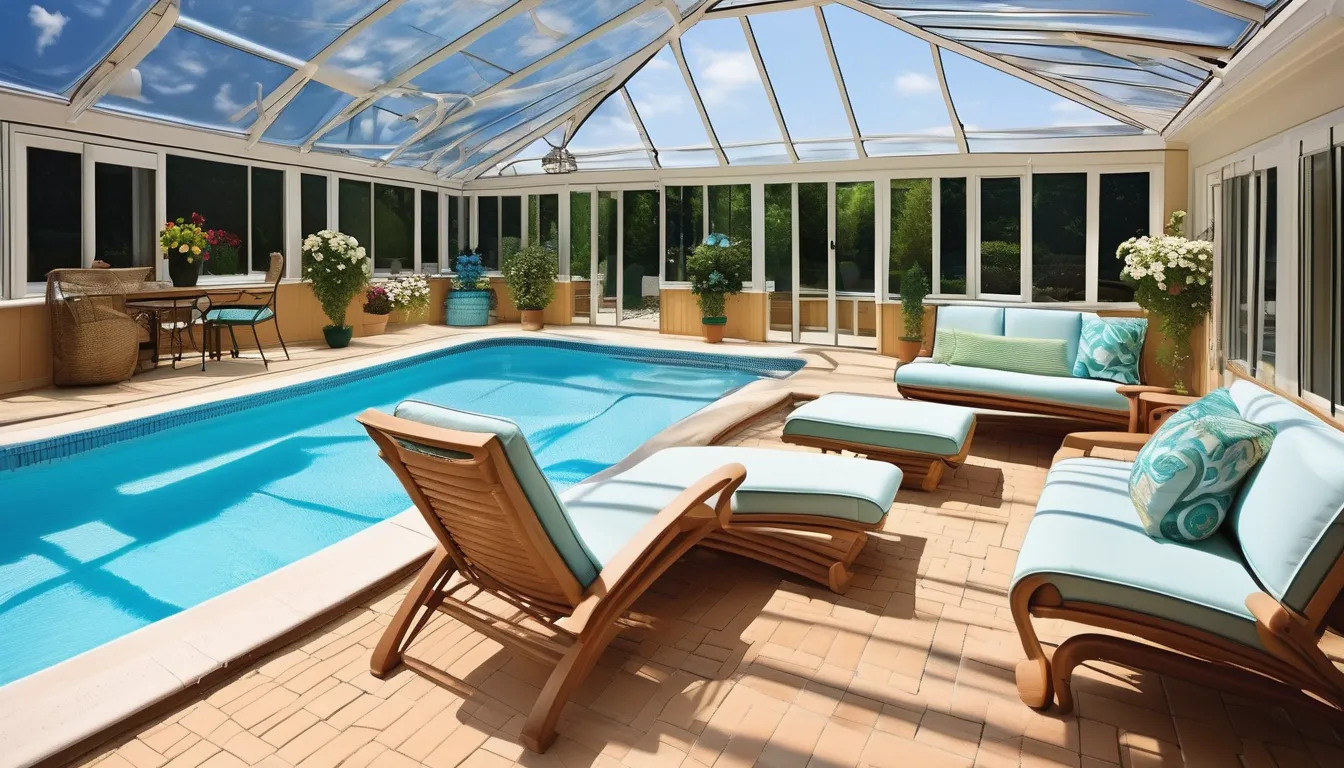You’re considering transforming your home with a solarium, a space that can boost your mood, energy levels, and overall well-being. But before you start, you have a lot to think about – design styles, materials, installation requirements, and budget optimization strategies all play a crucial role in creating a tranquil retreat that meets your needs. As you weigh your options, you’re likely wondering: what type of solarium design will complement my home’s architecture? What materials will provide the best balance of functionality and aesthetics? The answers to these questions will shape your solarium’s success – and it all starts here.
Benefits of Solarium Ownership
Making the most of a solarium in your home can be a game-changer. By incorporating this sunroom into your daily routine, you’ll enjoy increased exposure to natural light and warmth. This can boost your mood, energy levels, and overall well-being.
A solarium also provides a serene space for relaxation, allowing you to unwind and recharge after a long day.
As a solarium owner, you’ll have a unique opportunity to connect with nature year-round. The floor-to-ceiling glass panels offer unobstructed views of the outdoors, creating a seamless transition between your indoor and outdoor spaces.
This will encourage you to spend more time outdoors, even during the colder months. Additionally, a solarium can serve as a versatile space for entertainment, hobbies, or exercise, making it an excellent investment for homeowners who value flexibility and functionality.
Types of Solarium Designs
Three primary types of solarium designs cater to diverse tastes and architectural styles: traditional, modern, and conservatory. Traditional solariums feature classic lines, ornate details, and a symmetrical structure, often echoing the style of the main house. They’re perfect for homeowners who value elegance and sophistication.
Modern solariums, on the other hand, boast sleek, minimalist designs with clean lines, geometric shapes, and an emphasis on functionality. These designs work well with contemporary architecture and are ideal for those who prefer a more understated look.
Conservatory-style solariums combine elements of both traditional and modern designs, often featuring a mix of ornate details and sleek lines. These designs are perfect for homeowners who want to create a seamless transition between their indoor and outdoor spaces.
When choosing a solarium design, consider your home’s architectural style, your personal taste, and the intended use of the space. Think about the layout, the amount of natural light you want to let in, and the overall ambiance you want to create. By considering these factors, you’ll be able to select a solarium design that perfectly complements your home and lifestyle.
Choosing the Right Materials
| Material | Benefits | Considerations |
|---|---|---|
| Aluminum | Lightweight, corrosion-resistant, and affordable | May not be suitable for high-wind areas |
| Wood | Natural, aesthetically pleasing, and eco-friendly | Requires regular maintenance to prevent rot and insect damage |
| Vinyl | Low maintenance, durable, and resistant to warping | May not be as eco-friendly as other options |
| Fiberglass | Strong, corrosion-resistant, and energy-efficient | Can be more expensive than other materials |
Consider the frame, walls, and roof of your solarium when selecting materials. Aluminum and vinyl frames are popular choices, while wood and fiberglass can be used for walls and roofs. Think about your solarium’s style, budget, and functionality when making your decision. By choosing the right materials, you’ll ensure your solarium remains a beautiful and functional space for years to come.
Key Considerations for Installation
When you’ve selected the materials for your solarium’s frame, walls, and roof, it’s time to focus on the installation process. You’ll need to consider the layout of your property and how the solarium will be situated.
Think about the direction sunlight comes from and how you can position the solarium to maximize natural light. Ensure you have enough space for the solarium’s footprint and that it’s not obstructing any doors, windows, or walkways.
You’ll also need to assess the condition of your property’s foundation and ensure it can support the weight of the solarium. If you’re building on a slope or uneven ground, you may need to hire a professional to level the site or create a custom foundation.
Additionally, consider the electrical and plumbing requirements for your solarium, such as lighting, heating, and ventilation systems. You may need to hire licensed professionals to connect these systems to your existing infrastructure.
Lastly, check with your local government Solarium kaufen any building permits or regulations that apply to solarium installations in your area.
Maximizing Space and Budget
To help you with this, consider the following space and budget optimization strategies:
| Strategy | Space Saved | Budget Saved |
|---|---|---|
| Choose a compact design | Up to 20% | 10% – 15% |
| Select multi-functional furniture | Up to 30% | 15% – 20% |
| Use vertical space | Up to 15% | 5% – 10% |
| Consider a lean-to solarium | Up to 25% | 20% – 25% |
Conclusion
You’ve made it to the final step in crafting your serene oasis. With the right design, materials, and installation, your solarium will become a tranquil retreat that boosts your mood and energy levels. By maximizing space and budget, you’ll enjoy a unique space for relaxation, entertainment, and connection with nature. Now, bring your vision to life and start enjoying the many benefits of solarium ownership in the comfort of your own home.


